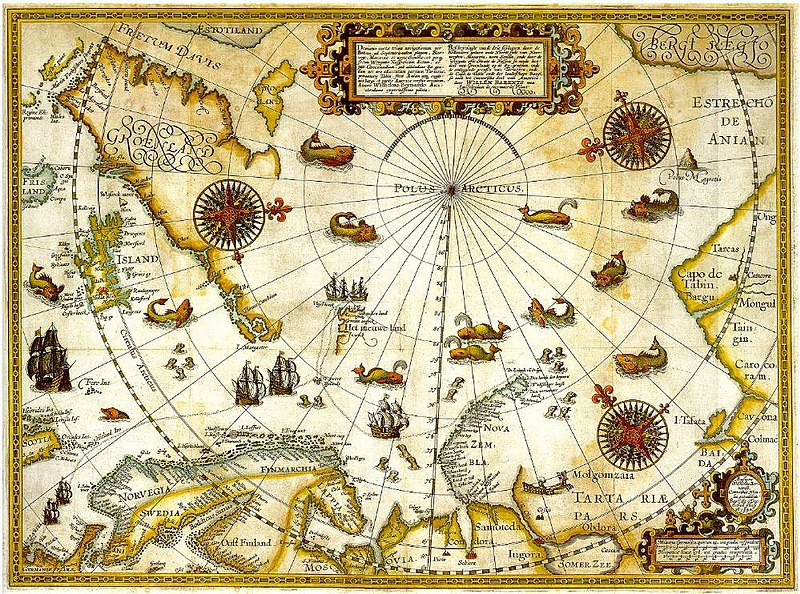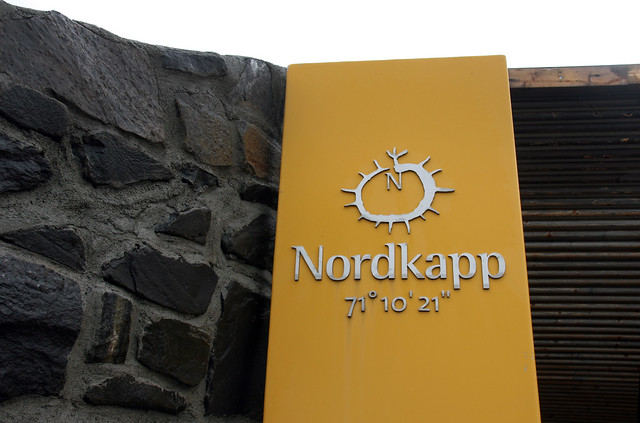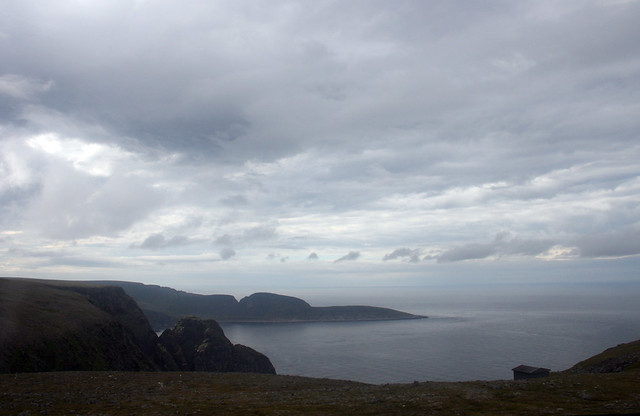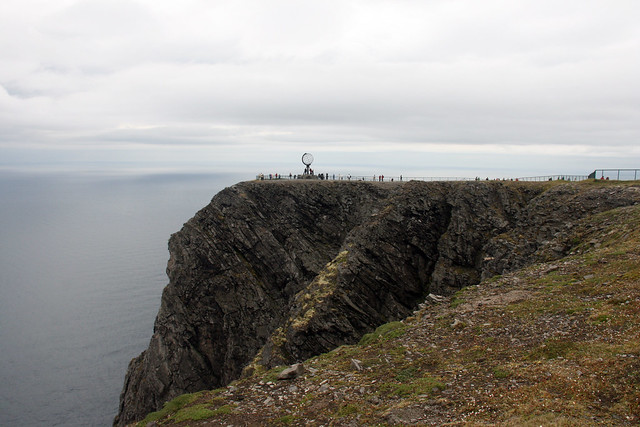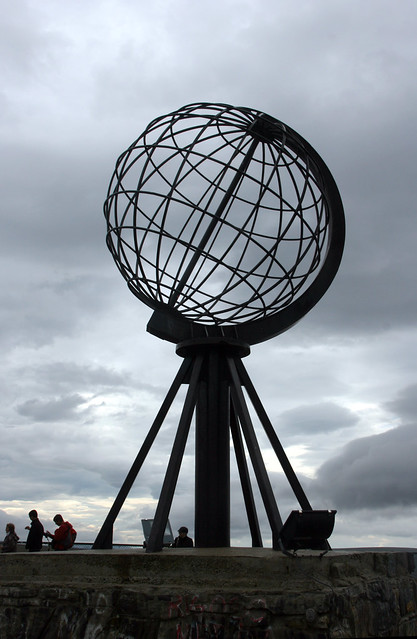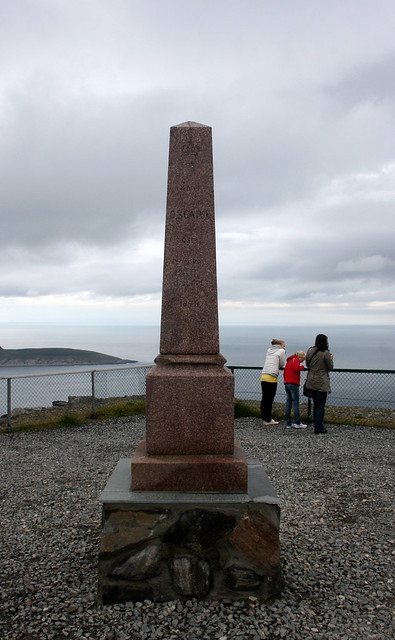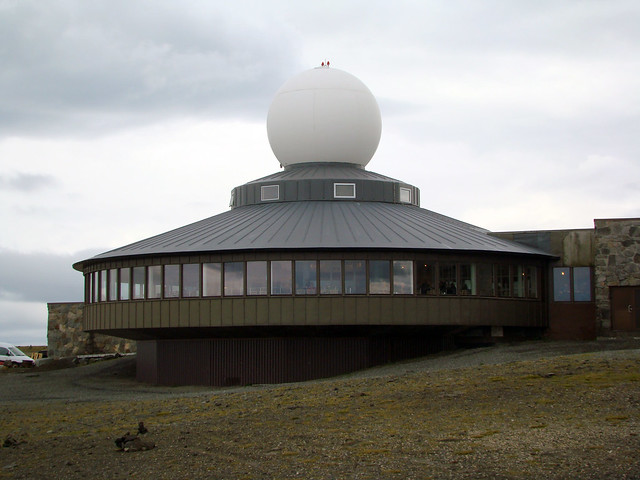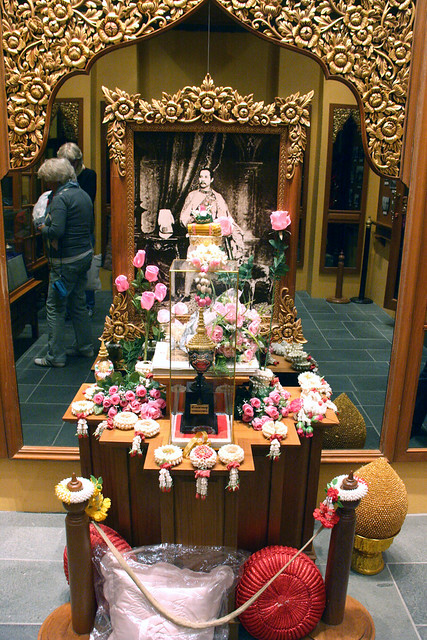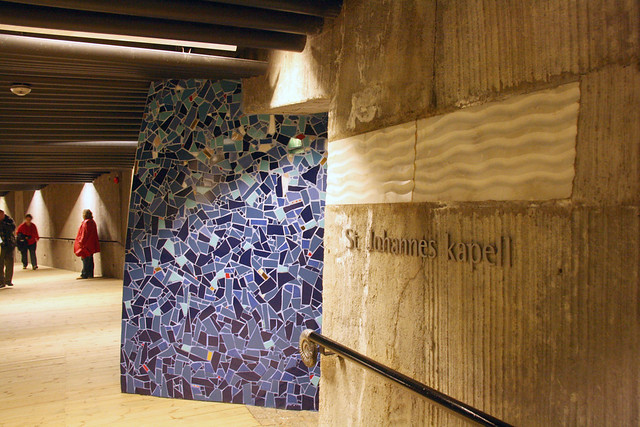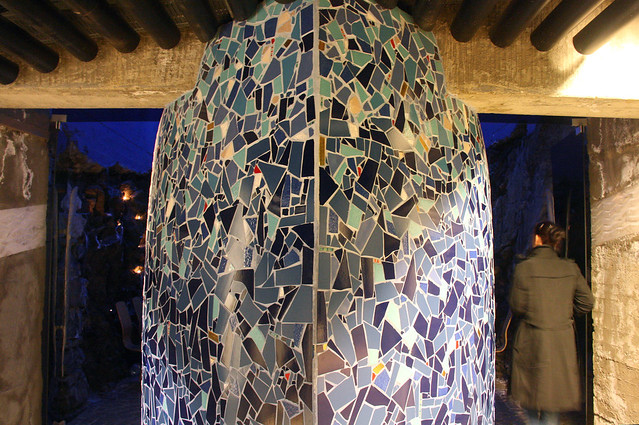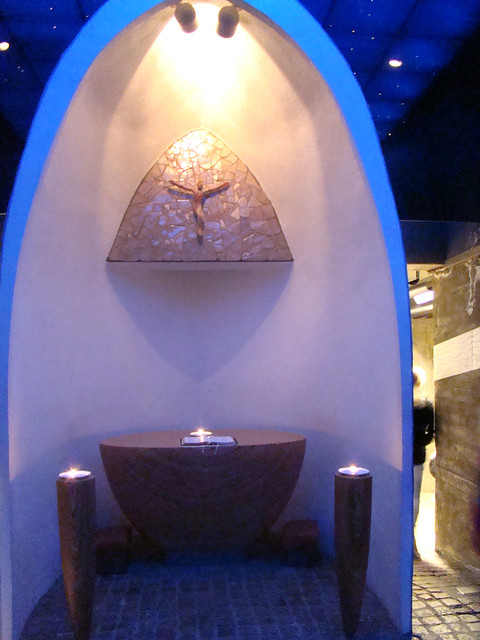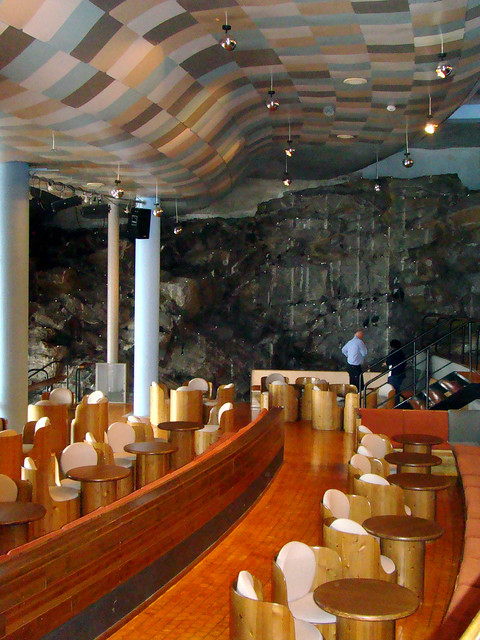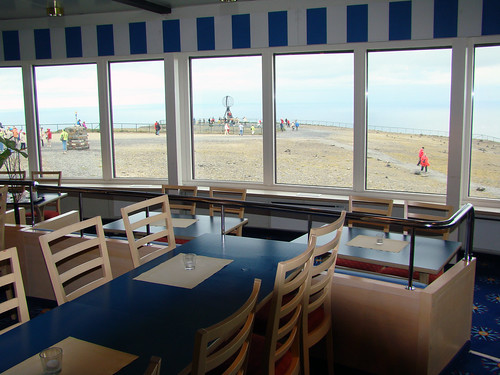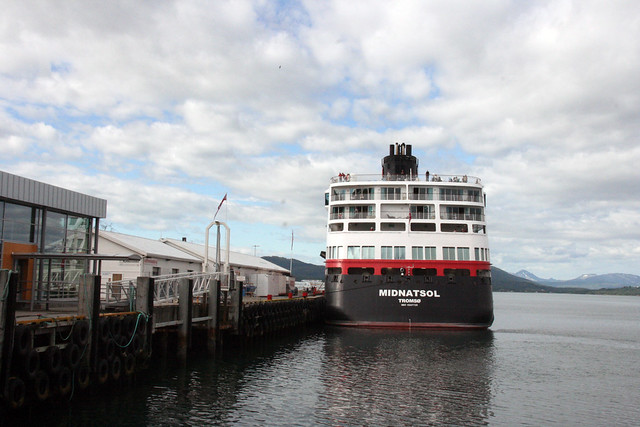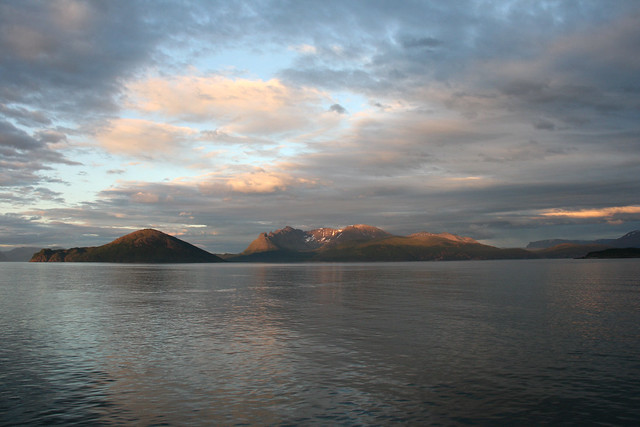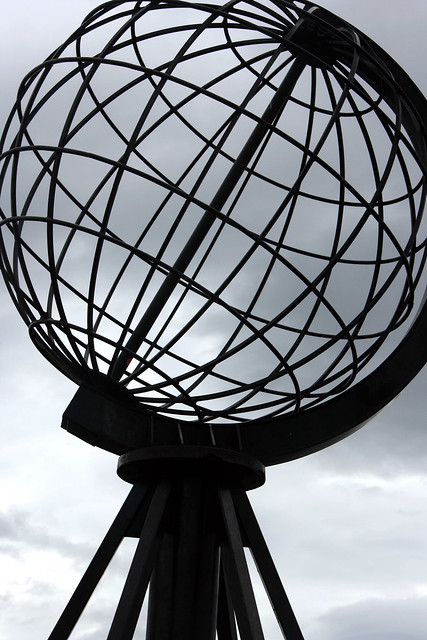
After our brief stop at the Sami trading post, we re-boarded the bus to reach the famous headland on the island of Magerøya named the North Cape of Norway.
English Explorer Richard Chancellor named this point in 1553 when he passed the cape during his search for the Northeast Passage. Nordkapp is the Norwegianized form of the English name.
The North Cape is the point where the Norwegian Sea, the Atlantic Ocean, the Arctic Ocean, and the Barents Sea all converge. The Barents Sea was named after Dutch explorer and cartographer Willem Barentsz. This enchanting depiction is from the journal of fellow cartographer Jan Huyghens van Linschoten who joined Barentsz during his first two attempts at finding the Northeast Passage in 1594.
English Explorer Richard Chancellor named this point in 1553 when he passed the cape during his search for the Northeast Passage. Nordkapp is the Norwegianized form of the English name.
The North Cape is the point where the Norwegian Sea, the Atlantic Ocean, the Arctic Ocean, and the Barents Sea all converge. The Barents Sea was named after Dutch explorer and cartographer Willem Barentsz. This enchanting depiction is from the journal of fellow cartographer Jan Huyghens van Linschoten who joined Barentsz during his first two attempts at finding the Northeast Passage in 1594.
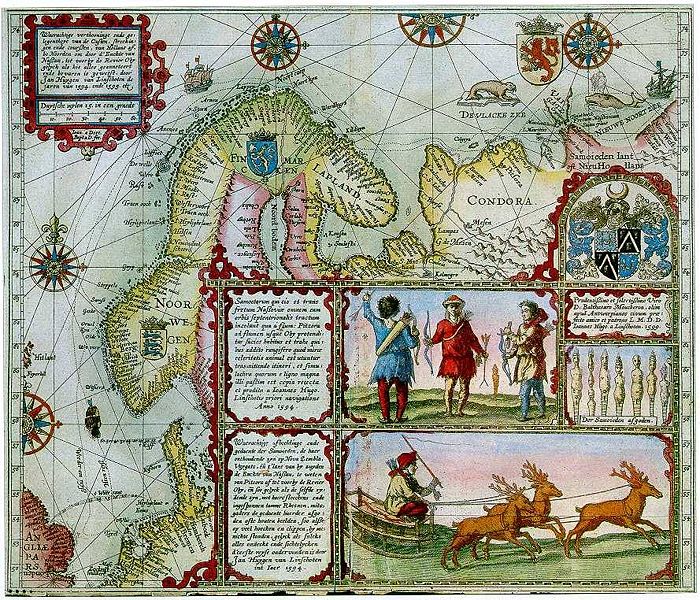 |
| Source: Wikipedia |
When I was in elementary school in Amsterdam, I learned about Barentsz’s tragic death at sea. I even had a jigsaw puzzle illustrating his quest. A nice summary of Barentsz's adventures can be found here at the website with the very intelligent name godutch.com.
Barentsz remarkable map of his third attempt in 1597; it was published two years later.
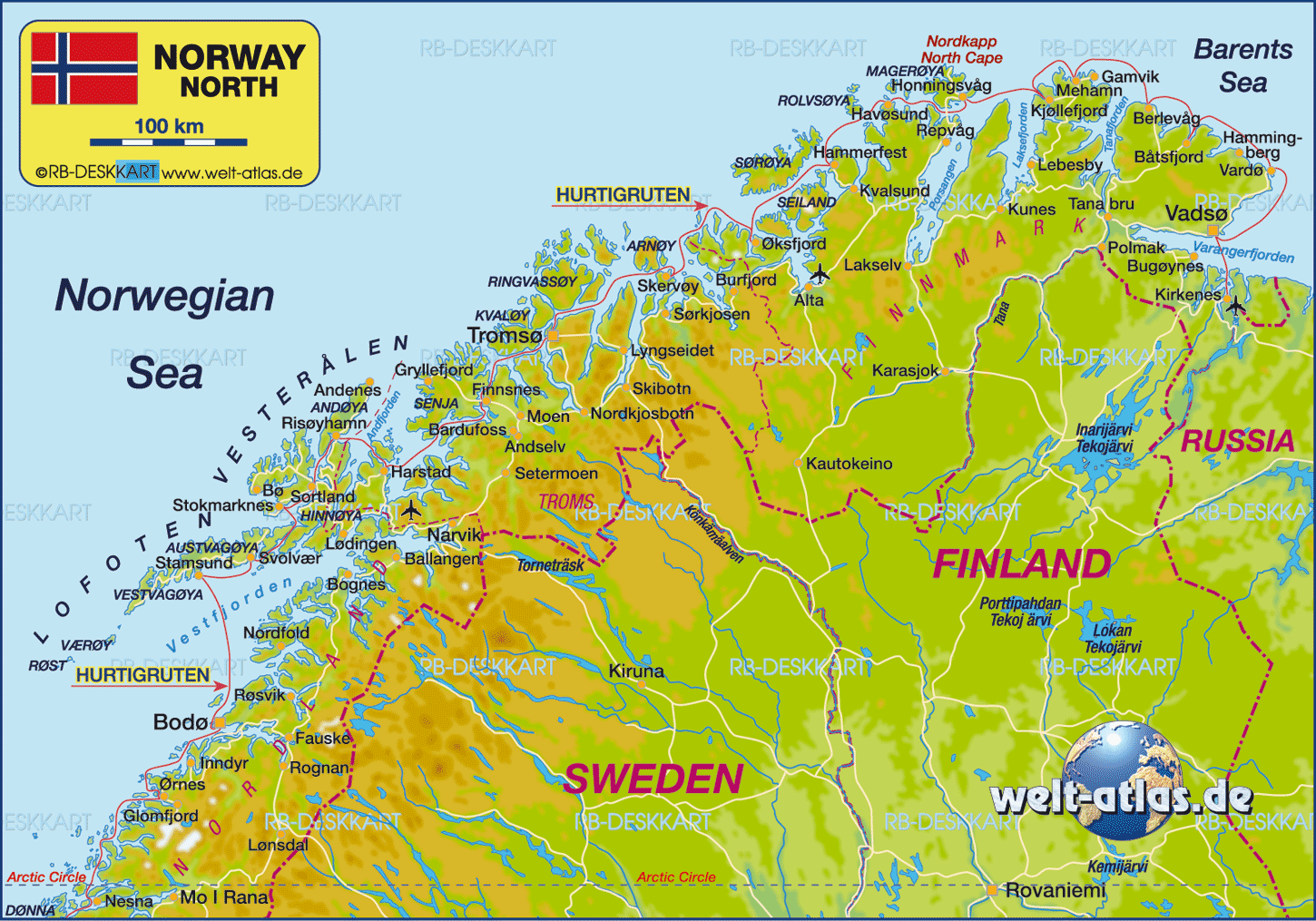
This modern, less fanciful, map shows the red Hurtigruten route we sailed on the “MS Midnatsol”. The North Cape is labeled, also in red, at the top of this map.
The North Cape is at latitude 71 degree, 10 minutes, and 21 seconds, just over a couple of thousand kilometers south of the North Pole. To give a frame of reference, San Francisco is at latitude 38 north and London is at 51.
Daring explorers have scaled the walls of cliffs of the North Cape over the years. This spire commemorates the visit of King Oscar II of Sweden and Norway in 1873.
In 1956, a road was built to give easier access to this famous landmark. The North Cape Hall houses the elaborate tourist center...
...which features full-scale dioramas of scenes of the journey and arrival of King Oscar II. A Thai temple and shrine honor Thailand's King Chulalongkorn's visit in 1907.
The ecumenical chapel St. Johannes Kapell...
...has a beautiful mosaic entry shaped like the bow of a ship.
...which is an altar with an opalescent mosaic on the inside.
A full bar, with its unique architecture and furniture that blends into the environment, allows you to take in the view while sheltered from the elements.
We had soup and an open-face sandwich in the nautically-decorated cafeteria.
...before our bus ride back to our ship.
“Midnatsol” is the word for “midnight sun” in Norwegian. The midnight sun can be seen from the North Cape between May 14 and July 29. We were at the Cape on August 2nd, so technically the sun did set, but I certainly did not witness it. I remember waking up in the middle of the night curiously looking out our porthole. Though this was taken a few hours earlier, it looked very similar at three in the morning.
I took this picture from the ships deck the night before, when we were still at the 70th parallel north.
After seeing the beauty of the sun’s light in this part of the world, I can understand why the midnight sun has been a major inspiration for literature, music, and countless paintings.

